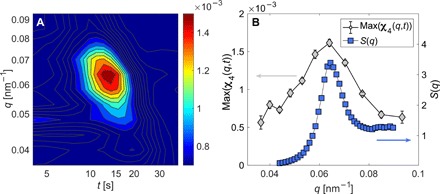Fig. 4. Wave vector dependence and time dependence of the dynamical heterogeneities.

(A) Map of the χ4(q, t) function. This function is dominated by a single broad peak centered at the q-value corresponding to the interparticle separation and at time t* ∼ τ. (B) Comparison between the peak value of the χ4(q, t*) (gray diamonds, left y axis) and the structure factor, S(q) (blue squares, right y axis). Both functions show a maximum at the q value corresponding to the first neighbors distance. Multiplying the maximum of χ4(q, t*) by the total number of particles in the scattering volume [N = (1.6 ± 0.3) × 106 in the present case] and correcting for the instrumental contrast it is possible to obtain an estimate of the number of particles participating in a correlated ballistic motion—a value which is Ncorr ≈ 104 in the present case.
